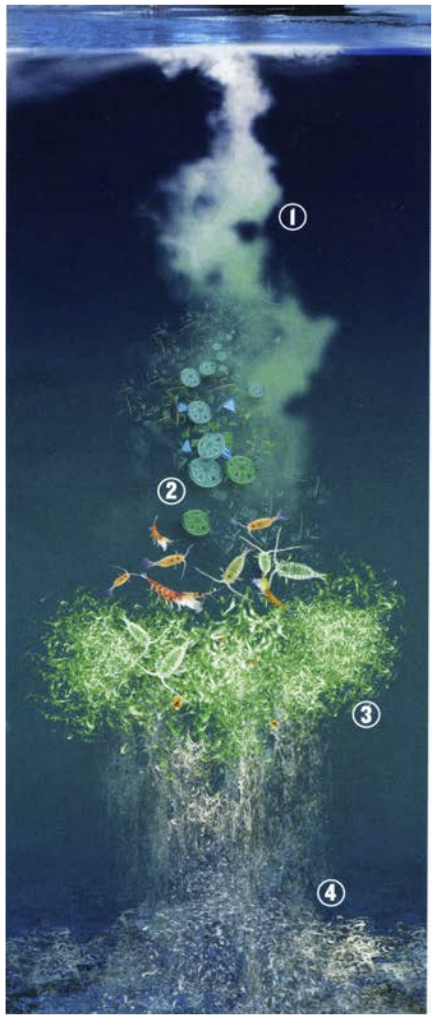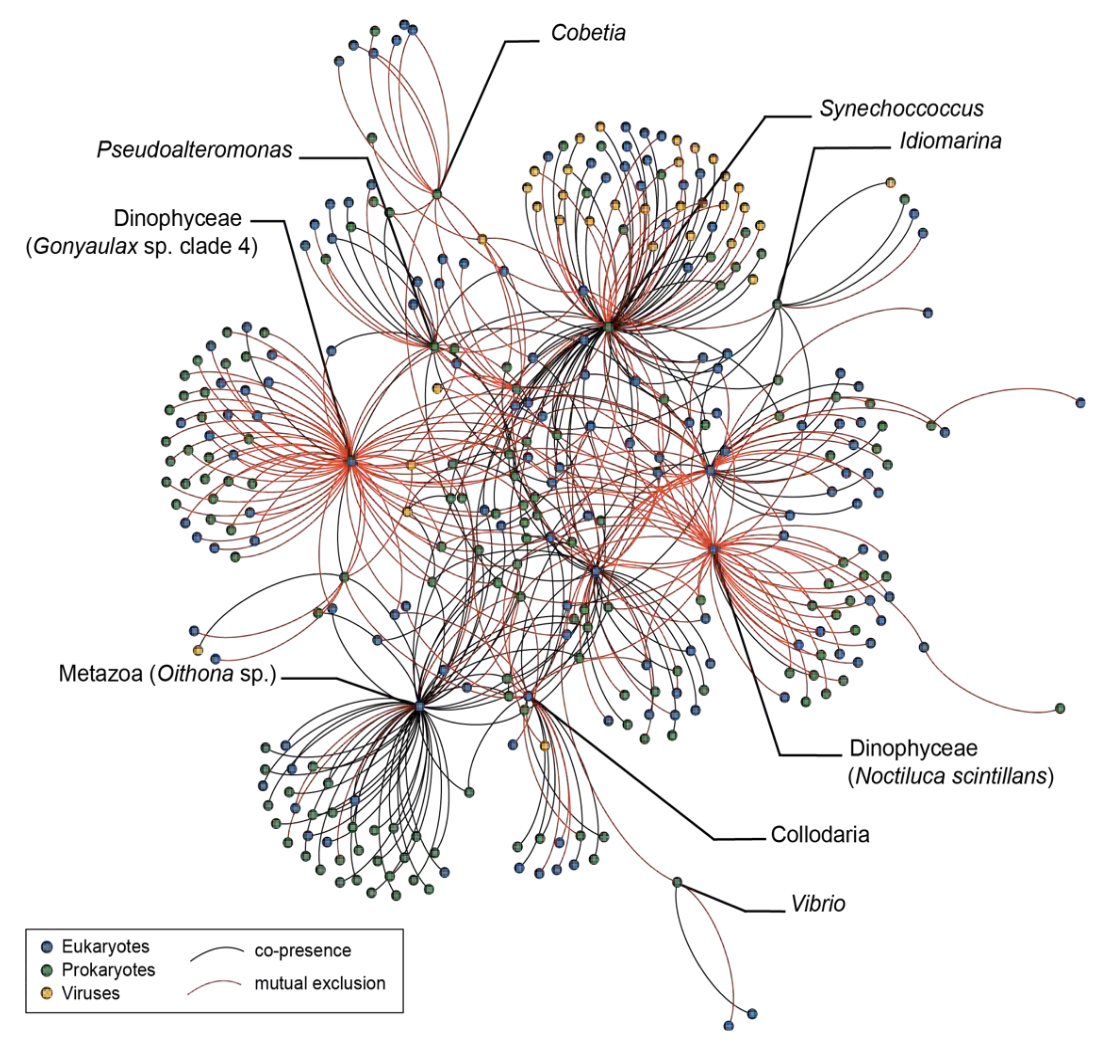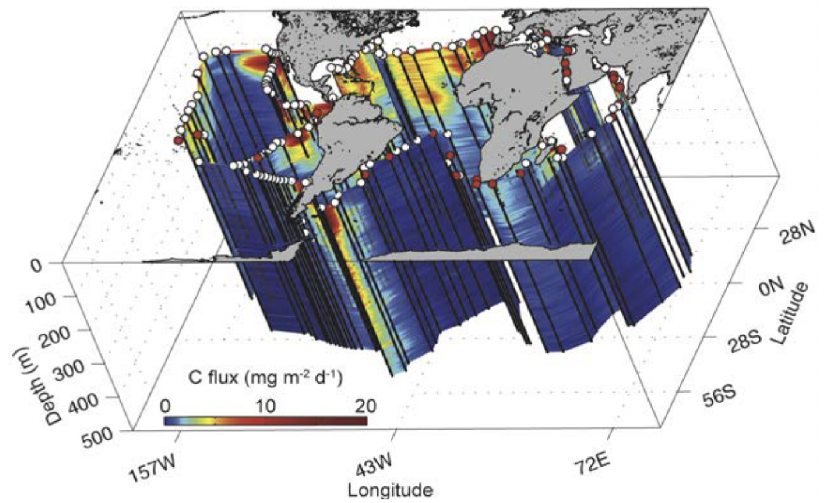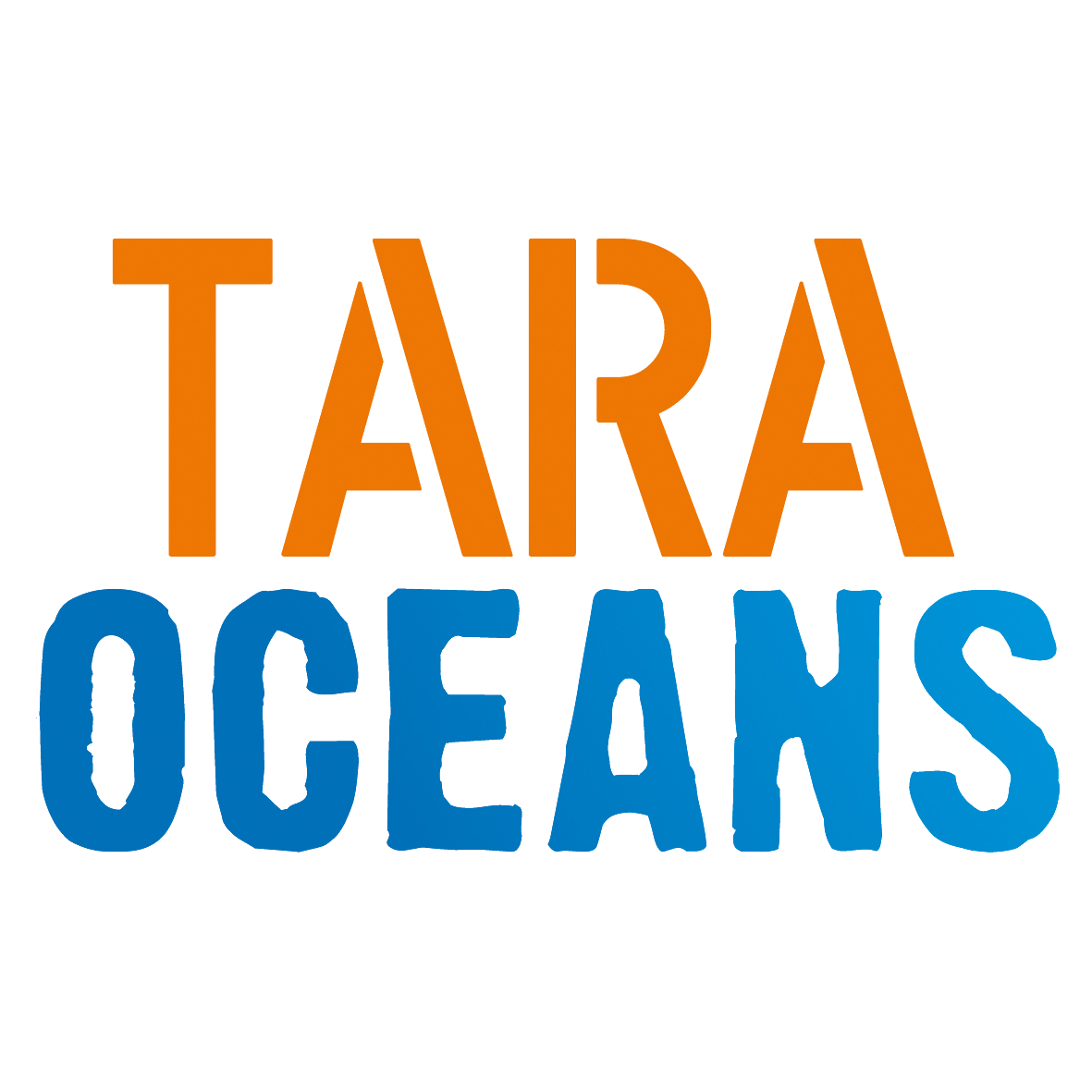The power of the Tara Oceans planetary eco-morpho-genetic dataset to assess marine plankton systems ecology across global spatial, temporal, and taxonomic scales has been reported in three papers published in Science and Nature (Lima-Mendez et al, 2015; Villar et al, 2015; Guidi et al, 2016), and two that are currently under review at Nature (Caputi et al, 2017; Richter et al, 2017). Drafting the first global plankton interactome spanning all domains of life (Deliverables F12), to our surprise we discovered that biotic interactions predominate over environmental influences in shaping community structure (Lima- Mendez et al., Science, 2015). A further potentially paradigm-shifting finding was the prevalence of symbiosis sensu lato, challenging the classical view of food webs of producers and consumers. In Guidi et al (2016) we went further and applied systems biology inspired network-partitioning methods to identify euphotic plankton sub-communities and gene modules associated with carbon export from the upper photic zone to the ocean interior, demonstrating our capacity to shift focus from genes to ecosystems and extract insightful hypotheses about key ocean biogeochemical processes (Fig. 7). The Villar et al (2015) study of the impact of the Agulhas choke point on plankton ecosystems (Deliverables F13) demonstrated how we can address basin scale oceanographic questions. The resulting hypothesis about the impact of Agulhas Rings on transported communities from the Indian to the Atlantic Ocean, successfully simulated in the MIT-GCM model, was only possible via the integration of in situ metagenomics data with fine grained physico-chemical contextual measurements. This milestone achievement in deciphering plankton dispersal has been continued with a global analysis of the influence of ocean circulation on plankton biogeography that shows the dominating role of lagrangian currents in shaping plankton communities on a characteristic timescale of 1.5 years (Richter et al, Nature, in review). Finally, in Caputi et al (2017) we described the dynamic plankton response, from genes to communities, to the key micronutrient iron. Specifically, we identified sub-communities that displayed global distribution patterns associated with iron concentrations, responding locally to iron with different evolutionary strategies. Collectively, these initial studies represent unprecedented scale systems biology analyses of a global ecosystem and are today an international reference. Future effort making use of dedicated modeling will further our understanding of interactions, adaptation and evolution of ocean’s life in the context of ongoing climate changes.



Figure 7. How Tara Oceans global eco-systemic data allow scaling up from genes or biomarkers’ communities to global ecosystem behavior. Left panel: Schematic representation of the biological carbon pump in the ocean. Atmospheric CO2 is transformed into organic carbon by phytoplankton in the sunlit layer, then incorporated into the highly-complex plankton interactome, and partly exported to deep oceanic layers and sediments through dead organisms, fecal pellets, and marine ‘snow’ (drawing from A. de Chastenet; note that depth, organisms and particle sizes are not to scale). Right side: we used systems-biology graph-based methods to integrate eukaryotic, prokaryotic and viral ‘omics’ data (top), and correlate their respective sub-networks to carbon export fluxes down to 500 m, as estimated at each Tara Oceans station from particle size distribution and abundance measured with the underwater vision profiler (UVP) (bottom). We could also identify keystone taxa or genes in the subnetworks (hubs) that can predict accurately carbon export.
